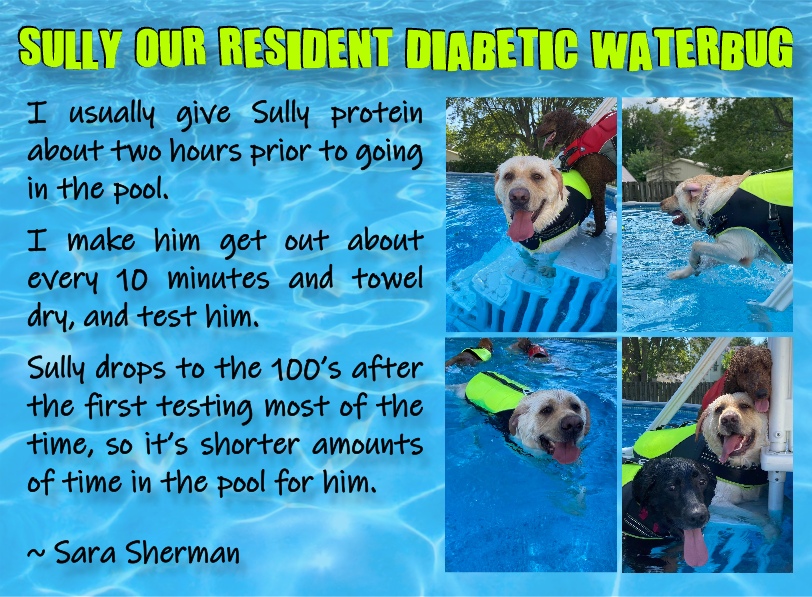Exercise and Your Diabetic Dog
Lucy was always an active little gal; she played rough with Frank, ran laps in the yard, played ball constantly, hunted for squirrels in the backyard and patrolled the perimeter consistently. After Lucy was diagnose with diabetes I was afraid to let her do the normal things that she had done before diagnosis. She was also diagnosed with severe pancreatitis when diagnosed with diabetes and that illness slowed her down, but only temporarily. Once she started feeling better that little girl went back to patrolling the backyard and chasing the annoying squirrels. And when she started playing, I was both elated and anxious. How would she do with exercise now that she was diabetic?
I had to adjust to a new life with a diabetic dog, I had to relax and let go of the control issues that I had. How did I do this? I learned her trends when she exercised. I adjusted times when we played ball if it was hot outside.
Life does not stop after your dog is diagnosed with diabetes. Let’s go over some tips so that you know how your diabetic dog’s body reacts to exercise; it is important to know their trends so that you can react appropriately. Grab a cup of your favorite caffeinated beverage and let’s get to it!
TESTING BLOOD GLUCOSE LEVELS is the only way you know how your dog’s body reacts to exercise. Typically, with exercise the body uses more glucose and this can cause blood glucose levels to drop. Why does this happen to diabetics? The pancreas has failed so we must inject insulin, since injected insulin is absorbed by the body over a period of hours, there is no “shut off” or pause to stop insulin absorption. When our pups exercise they can use glucose up quickly which can cause hypoglycemia so more strenuous exercise can cause a larger drop in blood glucose levels. Working dogs can suffer from exertional hypoglycemia, to read more about different causes of hypoglycemia, click here.
Here are steps to take to learn what your dog’s blood glucose trends are:
▪ Right before exercising take blood glucose levels. This gives you a baseline of what levels are.
▪ In the middle of exercising take a break and test blood glucose levels.
For example, your dog runs for 20 minutes at the dog park. After 10 minutes take a blood glucose reading.
▪ If blood glucose levels are within a safe range, continue exercising your dog.
▪ Test blood glucose levels right after exercise.
If your dog drops too low while exercising you can give a carby snack like a milk bone prior to exercise. Always make sure that you have a hypoglycemia kit with you, this should include a simple carbohydrate like Glucose SOS Energy Boost for Pets or honey/syrup, and a complex carb like wheat crackers along with a protein (peanut butter or meat jerky). And of course, your hypo kit should always have blood glucose meter, test strips and lancets available.

Remember, life after diagnosis does not stop… continue to do the things your dog loves, exercise is so good and healthy for them!
Until next week, stay cool and caffeinated!
If you have any questions, comments or suggestions, please start a conversation below.
If you are looking for a Facebook community to join for support, I have proudly been an admin in Diabetic Dog Owners for four and a half years. You can also join Canine Diabetes Support and Information on Facebook as well.
Be sure to join the PetTest family on Facebook and Instagram. PetTest has fun, interactive posts AND they have fabulous giveaways every week!
Do you need a blood glucose meter kit for your diabetes arsenal? Click here to purchase one today!
Glucose SOS Energy Boost for Pets is CRUCIAL to have on hand for a hypoglycemic episode! Click here to purchase!
For a printable version of this blog click here.

